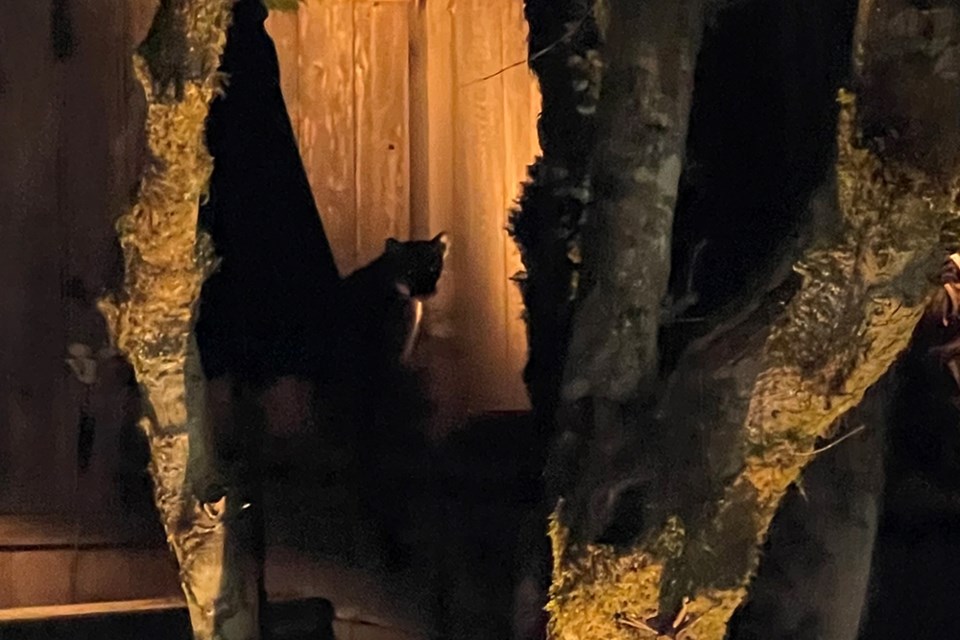When Caroline Girbeau Vincent peeked through her curtains after hearing a strange noise outside her Deep Cove home Saturday evening, the last thing she expected to witness was four cougars slinking across her backyard.
She had heard talk of the four felines lurking in the area, but never thought she would see them in the flesh on her own Lockehaven Place property – especially not at 7 p.m. on a weekend evening.
“I was a bit scared, it was really early. There’s still kids in backyards at that time,” she said. “I put the light on by the house and I saw those beautiful animals crossing. I was quite stunned by the size of them.”
Vincent said she rushed to fetch her camera but couldn’t find it because her “adrenaline was so through the roof.” By the time she located it and had it poised, the cougars were in the process of making their swift departure.
“I took pictures as they jumped the fence to the neighbour’s garden. You can see them on the fence with their tails hanging. They were so majestic. They’re really amazing animals,” she said.
“The chances of spotting a single cougar is so unlikely. Oh my gosh, to see all four together like this, what are the chances?”
The Conservation Officer Service has received three cougar reports to RAPP since Jan. 18, describing a family unit of three kittens and one adult female cougar.
Cougar family units at times utilize semi urban areas for the concentration of prey species such as deer, and racoons, said the COS, adding it has received reports of remains of deer in the Myrtle Park area, consistent with cougar feeding.
While there have been no reports of aggressive behaviours towards residents, the COS said caution should be observed and the public should keep pets and children inside while cougars are known to be in the area.
The COS encourages the public to call in sightings and conflicts to the RAPP line.
WildsafeBC program manager Lisa Lopez said the group would likely have been a mother and her kittens, with the young being “on the brink of being pushed out” the reason behind their larger than expected size.
Adding how “the best cougar encounters are the ones that you avoid,” Lopez said there are a number of recommendations for steering clear of unnerving wildlife encounters.
Lopez said locals should be more aware of their surroundings, especially when turning corners or when in areas with lots of shrubbery, travel in groups, and make as much noise as possible when moving to avoid surprise encounters. Dusk and dawn are when cougar activity is at its highest point, so it is important to be extra cautious during this time, she said.
If a cougar is encountered, the person should keep calm and never run – that could trigger a predator prey response from the animal.
“The next thing to do is make yourself look as large as possible, and, if you’re in a group, stay close together so that you’re a larger entity. Back away slowly while keeping the animal in view,” she said.
If there are small children or small pets around, pick them up immediately, she added.
Lopez said it is important to manage attractants in yards to keep animals like deer away from homes and gardens. In the case of encounters with deer carcasses, it’s important to bear in mind that the cougar will return to the site to feed on its kill over the course of several days.
In such cases residents should notify the conservation officer service number via 1-877-952-7277.
Mina Kerr-Lazenby is the North Shore News’ Indigenous and civic affairs reporter. This reporting beat is made possible by the .


